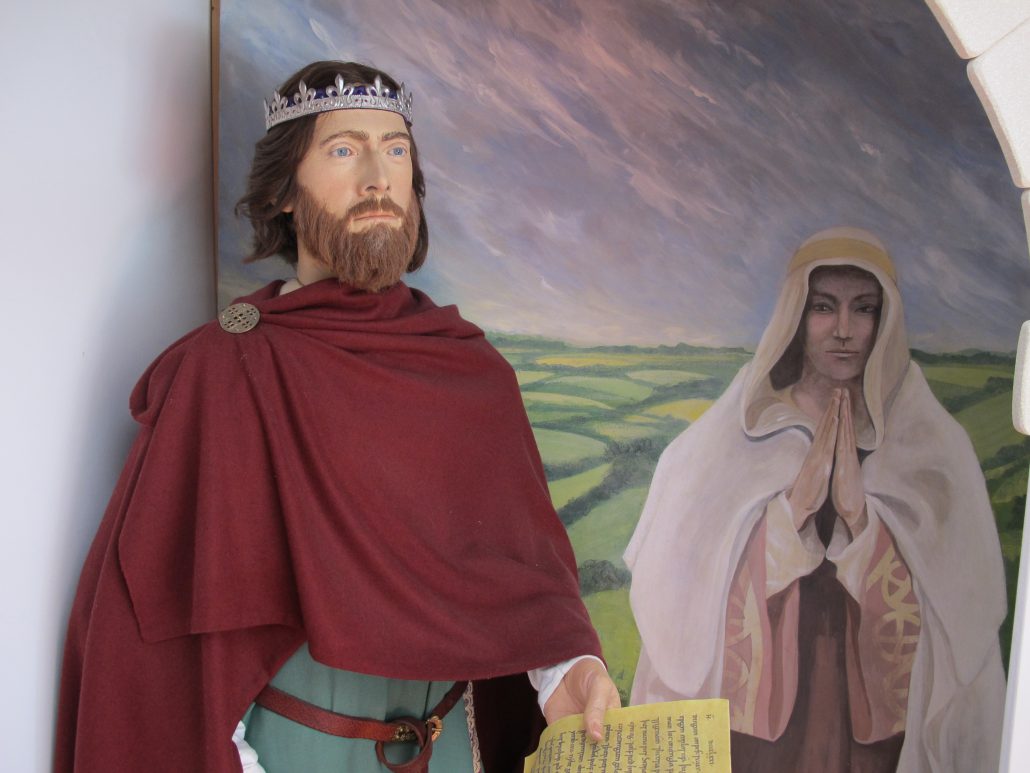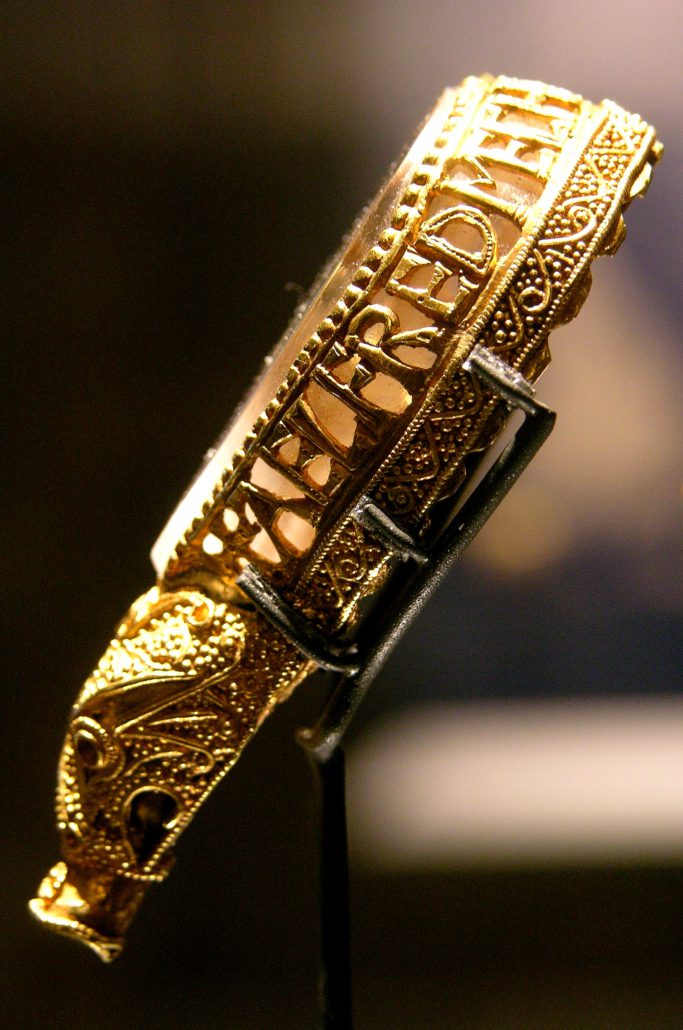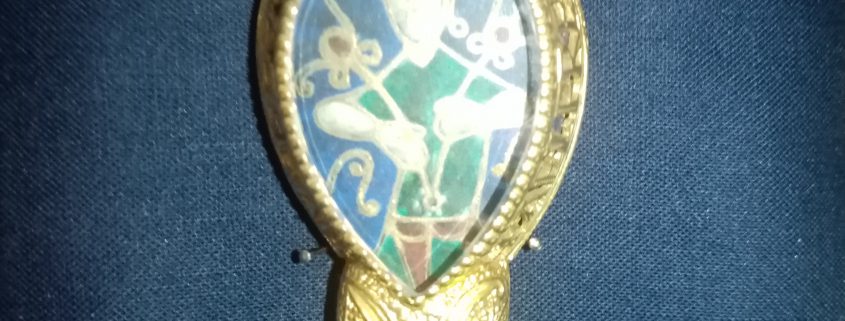Facsimile of “Alfred Ordered Me Made” Masterpiece Returns To Gold Hill Museum
The ninth century Alfred Jewel was unearthed by the ploughing of a field at North Petherton, Somerset, in 1693. It was given to the University of Oxford in 1718 and is now one of the Ashmolean Museum’s most prized treasures. North Petherton lies between Bridgwater and Taunton, six miles from King Alfred’s reedy Athelney hideaway in the marshes of the Somerset Levels. Here c.878 the refugee Alfred allegedly “burned the cakes” while planning a successful Saxon counter-attack on the marauding Vikings. Part of his strategy was to build a network of fortified “burhs”, of which hilltop Shaftesbury was one.
A number of replica Alfred Jewels were made in 1901 to mark the Millennium of Alfred’s death (actually in 899). In 1964 a replica was presented to Gold Hill Museum by Major Meyrick-Jones of Layton House, Layton Lane, Shaftesbury. As Dave Hardiman writes in a well-researched article in the most recent Byzant magazine: The accession book notes that the replica had an “Ashmolean look about it”. With King Alfred’s great association with Shaftesbury due to his foundation of the Abbey and installation of his daughter as the first Abbess, the replica jewel was proudly displayed for some 20 years until, sadly it disappeared, believed stolen, and has never been recovered. (Security was tightened as a result of the theft).

In 2015 the present writer queued for an hour at the Museum of Somerset in Taunton to snatch a brief and not very satisfactory look at the original Alfred Jewel while it was on temporary loan. Now, thanks to the generosity of S&DHS member Phil Proctor, you can enjoy a much more leisurely and rewarding inspection, for free, in Room 1 of a high quality replica. Phil was inspired by Dave’s article to buy a replacement for the stolen piece and donate it to us. This follows his kind gift last year of a Shaftesbury-made longcase clock.

The Ashmolean Museum’s online description begins: The Alfred Jewel is a masterpiece of goldsmith’s work formed around a tear-shaped slice of rock crystal. Its inscription: AELFRED MEC HEHT GEWYRCAN – ‘Alfred ordered me to be made’ – connects the jewel with King Alfred the Great (r. 871–899) making it among the most significant of royal relics. Other contextual evidence tends to strengthen the identification with Alfred. Apart from proving his military prowess by victories over the Danes, Alfred was a considerable scholar and believed passionately in the merits of Christian education. In the Preface to his translation from Latin to Old English of Pope Gregory’s Pastoral Care he writes: When I reflected on all this, I recollected how – before everything was ransacked and burned – the churches throughout England stood filled with treasures and books. Similarly, there was a great multitude of those serving God. And they derived very little benefit from these books, because they understood nothing of them, since they were not written in their own language.
Accordingly Alfred ordered that translations of texts he considered most needful for all to know, should be distributed to churches throughout his kingdom. In the particular case of the Pastoral Care each copy of the (handwritten illuminated) book was to be accompanied by an aestel worth fifty mancuses. And in God’s name I command that no one shall take that aestel from the book, nor the book from the church.
An aestel was a pointer used to follow a line of text in scripture, an aid to reading out loud. Alfred’s aestels were expensive as a mancus was a gold coin worth 30 silver pence, equivalent to a month’s wages for a skilled worker. It is reasonable to assume that the Alfred Jewel is one of six surviving aestels. The functional part of the pointer, made of wood or ivory, would be clamped into the dragon’s mouth at the base of the Jewel. There has been much speculation as to the identity of the enamelled figure: Christ; St Cuthbert of Lindisfarne; Alfred himself? and the symbolism intended. In her recent book Femina: A New History of the Middle Ages, Through the Women Written Out of It Dr. Janina Ramirez suggests that The Alfred Jewel, meant to accompany books that spread wisdom, may depict not sight, as in eyesight, but rather insight; the pursuit of knowledge.
The “pursuit of knowledge” of Shaftesbury’s history is available every day for free until late October at both Gold Hill Museum and Shaftesbury Abbey and Gardens.
Click here to listen to Fontmell Magna native Dave Hardiman, interviewed on the Alfred Daily, describing a forthcoming village Archive Society Exhibition on the theme of the Parish at Work. It’s at Fontmell Village Hall for the weekend starting 26 July 2024.



